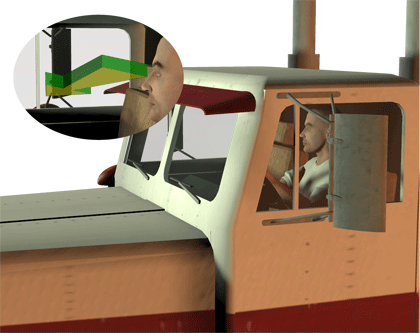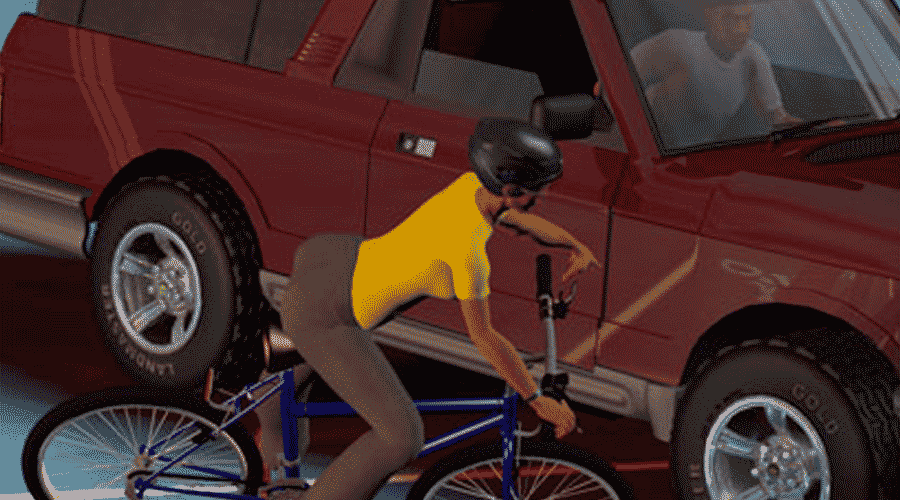
Drivers, Look For Cyclists and Pedestrians before turning right!
Under Oregon law, bicyclists are required to follow the same traffic laws as auto drivers. Bicyclists deserve the same protections provided to motorists by those laws.
The Right Hook Car vs. Bicycle Accident
One of the top hazards an urban bicyclist has to contend with is having a car turn right in front of the bicyclist's direction of travel. This type of accident happens often and occurs even when the bicyclist is riding in a designated bike lane and would seem to be easily visible by the car driver who often had just passed the cyclist.
Car Drivers too often seem to underestimate the speed cyclists and pedestrians relative to their own.
Driver's also often do not use their turn signals, pass a cyclist and then turn as if they never saw the cyclist or do not understand the cyclist is also moving with some speed.
Cutting off a bicyclist like this leaves no possible time for the cyclist to stop. Sometimes a bicyclist may lose control of the bicycle, or it may necessitate the bicyclist needing to force a fall to prevent contact with the auto.
The bicyclist can also crash into a parked car or just get run off the road, or crash into moving traffic. Drivers do this type of accident scenario cutting off a pedestrian's right of way as well, even in marked crosswalks, which some experts say may be because the driver is focused on looking to the left in order to make their right hand turn that drivers do not scan the sidewalk nor sides of roads for cyclists and pedestrians.
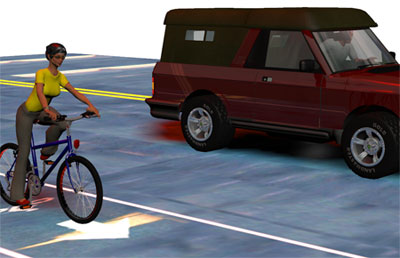
Unfortunately, with vehicle sizes getting bigger and bigger, more pedestrians are getting hit from cars turning right, as if the driver is unable to see the pedestrians, bicyclists, and other roadway users. According to recent research by the Insurance Institute for Highway Safety, "SUVs, other large vehicles often hit pedestrians while turning."
At intersections, the odds that a crash that killed a crossing pedestrian involved a left turn by the vehicle versus no turn were about twice as high for SUVs, nearly 3 times as high for vans and minivans and nearly 4 times as high for pickups as they were for cars. The odds that a crash that killed a crossing pedestrian involved a right turn by the vehicle were also 89 percent higher for pickups and 63 percent higher for SUVs than for cars.
An interesting study used eye tracking devices to study where drivers are looking in an urban environment (Tornonto). It was a preliminary study which used only 19 participants, but the results are disturbing. The drivers they selected were familiar with the streets they were driving on. They had the drivers make right turns on a small course of well chosen roads both with controlled lighted intersection and without, near a bike lane, and also near a protected bike lane. The researchers were also interested in the driver's behavior looking for pedestrians on the sidewalks.
They found that drivers might check their mirrors, but they did not do a visual check for the blind spots. . About 25% of the small sample of drivers failed at both turns they made in the study! This may come as no surprise to cyclists. It may be a driver training issue the researchers say, or it may also have to do with drivers not being aware of how to drive in an urban environment around bicyclists and pedestrians. They will hopefully be expanding this study in the future.
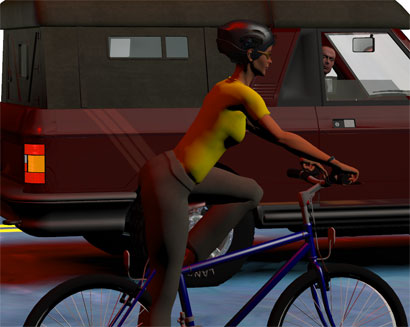
What did surprise lead author Birsen Donmez, who studies human behavior and transportation, was that more than half of her 19 participants were guilty of such attention failures. And these were drivers between 35 and 54 years old—the ones who, according to insurance companies, represent the lowest crash-risk age group. [...] Overall, 11 out of the 19 drivers failed at one turn or another—five failed at both turns—and all were related to not diligently checking for cyclists. (Donmez suspects that might be in part because pedestrians tend to move slower and are therefore, in the drivers' view longer than cyclists.)
Science Tackles the 'Right Hook,' Biking's Most-Feared Crash
When a pedestrian or cyclist is right hooked by a big rigs or box truck, there is an additional danger to the cyclist or pedestrian of ending up underneeth. Many cities have put side guards on city trucks (city fleets that is, not requiring them yet on commercial or privately owned trucks), including Portland, Boston, New York City, and more, because of the extreme danger this type of accident poses to cyclists and pedestrians, as well as motorcyclists and even small cars. Japan has required side guards since 1979, the UK and countries in the EU since the 1980's.
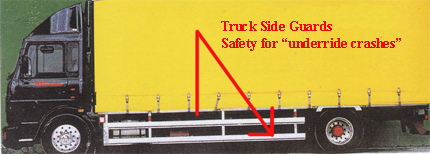
Truck side guards are vehicle-based safety devices designed to keep pedestrians, bicyclists, and motorcyclists from being run over by a large truck's rear wheels in a side-impact collision. Volpe is advancing this technology's adoption in the United States by conducting research and partnering with public- and private-sector fleets to help deploy side guards and other technologies that address the deadliest road crashes: those between large trucks and pedestrians or bicyclists. While large trucks comprise 4 percent of registered vehicles, large trucks are involved in 10 percent of pedestrian and bicyclist fatalities. In 2016, these fatalities rose to 468, the highest since 1990. [...] Based on studies conducted in the United Kingdom, Australia, Sweden, and the Netherlands, side guards are an effective technology for reducing the number of vulnerable road user fatalities and the severity of injuries, especially for bicyclists.
